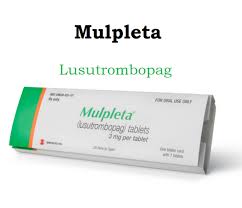What is Lartruvo?

Lartruvo, known generically as olaratumab, is a prescription medication indicated for the treatment of soft tissue sarcoma (STS). This form of cancer originates in connective tissues, including muscles, fat, blood vessels, and nerves. Lartruvo was designed to be administered alongside the chemotherapy agent doxorubicin for patients who were not candidates for surgical intervention or radiation therapy.

Mechanism of Action
Lartruvo functions as a monoclonal antibody that specifically targets the platelet-derived growth factor receptor alpha (PDGFR-α). This receptor is involved in cellular growth and division, and its activation can contribute to tumor development and progression in certain cancers. By binding to PDGFR-α, Lartruvo inhibits the receptor’s function, potentially slowing or halting the proliferation of cancerous cells.
Indications for Use
Lartruvo was primarily indicated for:
Treatment of Advanced Soft Tissue Sarcoma: It was used in conjunction with doxorubicin for adult patients with advanced soft tissue sarcoma who had not previously undergone chemotherapy for metastatic disease and were ineligible for surgery or radiation.
Efficacy and Regulatory Approval
In 2016, Lartruvo received accelerated approval from the FDA based on initial clinical trial findings that indicated a potential improvement in overall survival for patients with advanced soft tissue sarcoma when used in combination with doxorubicin.
Dosage and Administration Guidelines
Lartruvo was delivered via intravenous (IV) infusion.
Dosage Protocol:
The standard dosage was 15 mg/kg administered as an IV infusion on Days 1 and 8 of each 21-day treatment cycle. It was used in combination with doxorubicin for a maximum of 8 cycles. If doxorubicin was halted due to adverse effects or other considerations, Lartruvo could be continued as a standalone treatment.
Administration Details:
The infusion of Lartruvo typically took about 60 minutes. Prior to administration, patients were given premedication with an antihistamine and corticosteroid to mitigate the risk of infusion-related reactions.
Side Effects
While Lartruvo may assist in the management of soft tissue sarcoma, it is important to be aware of its potential side effects.
Common Side Effects:
Nausea: This is a prevalent side effect, typically managed with anti-nausea medications.
Fatigue: Many individuals reported experiencing tiredness or a lack of energy.
Muscle Pain: General discomfort or soreness in the muscles was frequently noted.
Diarrhea: Some patients experienced gastrointestinal disturbances.
Decreased Appetite: A decline in appetite was observed, which could lead to weight loss.
Serious Side Effects:
Infusion Reactions: Patients might experience reactions such as flushing, shortness of breath, and hypotension during or after the infusion.
Neutropenia: A notable decrease in white blood cell count, heightening the risk of infections.
Thrombocytopenia: Low platelet levels, which can increase the likelihood of bleeding.
Hyperglycemia: Some patients reported elevated blood sugar levels.
Precautions and Warnings
Infusion Reactions: Close monitoring of patients during and after the infusion was essential to identify any signs of hypersensitivity or infusion reactions. Premedication was utilized to mitigate these risks.
Hematologic Toxicity: Regular assessments of blood cell counts were crucial due to the potential for neutropenia and thrombocytopenia.
Liver Function: Routine liver function tests were conducted, as there was a risk of liver toxicity.
Use in Pregnancy and Breastfeeding: Lartruvo could pose risks to an unborn child, thus it was not advised for use during pregnancy. Women of childbearing age were recommended to employ effective contraception during treatment and for a designated period afterward. Breastfeeding was also discouraged during the treatment course.
Effectiveness and Post-Marketing Trials
After its initial approval, Lartruvo was subjected to additional clinical trials to validate its effectiveness. Unfortunately, a subsequent phase III trial (the ANNOUNCE trial) did not show a significant enhancement in overall survival for patients receiving Lartruvo compared to those treated solely with doxorubicin. Consequently, Lartruvo was withdrawn from the market in 2019
Conclusion
Lartruvo (olaratumab) was introduced as a potential therapeutic option for advanced soft tissue sarcoma, with the goal of enhancing survival rates when administered alongside doxorubicin. Although early research resulted in its accelerated approval, subsequent trials failed to validate its efficacy, resulting in its removal from the market. Patients who had previously received Lartruvo are encouraged to consult their healthcare providers regarding alternative treatment options. Despite its withdrawal, Lartruvo has played a role in advancing research and knowledge surrounding targeted therapies in the field of cancer treatment..













